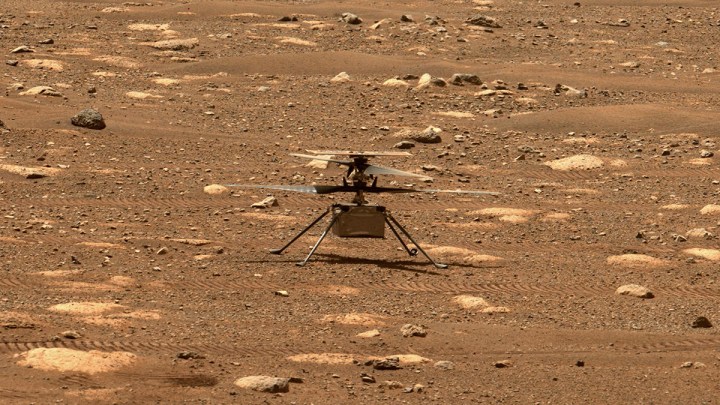
We’ll have to wait a little longer to see the data on the first test flight of the tiny Mars helicopter Ingenuity, currently sitting on the Martian surface. NASA had planned to run the helicopter’s first test flight today, Sunday, April 11, but the flight has now been delayed until next week.
Now, the first test flight will take place on Wednesday, April 14 at the earliest. The delay is due to an issue spotted during a test of the rotor blades on Friday, April 9.
“During a high-speed spin test of the rotors on Friday, the command sequence controlling the test ended early due to a “watchdog” timer expiration. This occurred as it was trying to transition the flight computer from ‘Pre-Flight’ to ‘Flight’ mode. The helicopter is safe and healthy and communicated its full telemetry set to Earth,” NASA wrote in an update. “The watchdog timer oversees the command sequence and alerts the system to any potential issues. It helps the system stay safe by not proceeding if an issue is observed and worked as planned.”
The issue may not be a serious one, but due to the experimental nature of the helicopter, NASA engineers are extremely conservative about when to go ahead with testing. The engineers choose to review testing data very carefully before doing anything which could put the craft in jeopardy.
For the first test, the plan is for the helicopter to take off, hover in the air for around 30 seconds, and then land back on the Martian surface. During this time, the craft will control itself autonomously, using data from its sensors to determine its position relative to the ground. If this test goes well, later in the mission it will go on increasingly complex missions, like flying away from the rover and possibly even setting up its own base station away from the rover as well.
Ingenuity is what’s called a technology demonstration, which means that it doesn’t carry instruments specifically for scientific investigation. Instead, its aim is to determine whether helicopters are viable for exploring Mars, and perhaps other planets too. If successful, this could revolutionize Mars exploration by allowing access to hard-to-reach areas like mountains or canyons and could help plotting paths for rovers as well.
When the first test flight does go ahead, we have the details on how you can watch NASA’s livestream of the event here.



